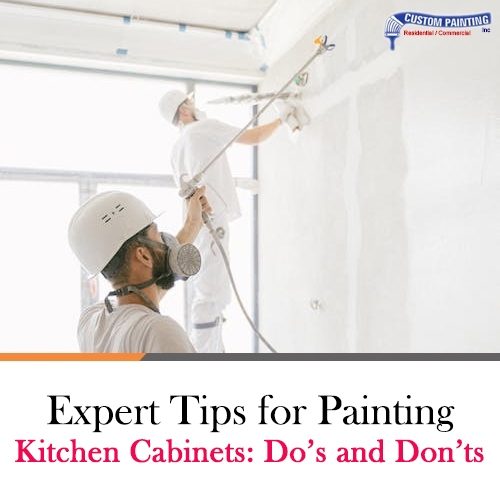When you need a painter for your kitchen cabinets, you should hire one who’s particularly skillful in this kind of work. As professional painters serving the Bay Area, including Pleasant Hill, Lafayette, Moraga, Orinda, Walnut Creek, and Concord, we know that painting kitchen cabinets is a cost-effective way to refresh your space without the expense of a full remodel. However, achieving a flawless finish requires expertise, the right materials, and proper preparation. Here’s what you should do—and what to avoid—when taking on this project.
The Do’s of Painting Kitchen Cabinets
Selecting the right paint or stain is crucial for durability and a professional look. Not all paints work for all cabinet surfaces, so knowing your material is key:
- For wood cabinets: High-quality acrylic, latex-based paint with a satin or semi-gloss finish offers a durable and smooth result.
- For laminate cabinets: Use a primer specifically designed for laminate before painting.
- For a natural wood look: Stains are best for hardwood cabinets, enhancing their grain while providing a protective layer.
Ensure you purchase the correct amount of paint—it’s better to have extra than to run out mid-project. For example, if your calculations suggest two gallons, buy three to be safe, especially if multiple coats are needed.
Prepare Your Cabinets Properly
Preparation is the foundation of a professional-looking finish. Skipping steps will result in uneven paint application and a less durable surface. Here’s what proper prep entails:
- Empty cabinets completely.
- Remove all doors, drawers, and hardware.
- Clean all surfaces thoroughly to remove grease and dirt.
- Sand cabinets to create a surface that paint or stain can adhere to.
- Repair any dents or imperfections before painting.
Paint Doors and Drawers in a Separate Area
Once removed, doors and drawers should be painted outside or in a well-ventilated space such as a garage. This prevents excess dust from settling on wet paint and avoids paint splatters on your kitchen floors and counters.
Use the Right Tools for Application
- Small paint rollers or sponges provide smooth, even coverage without brush strokes.
- Spray painting works best for raised panel cabinets, ensuring a uniform finish. However, if you lack experience with a paint sprayer, it’s best to leave it to the professionals to avoid uneven application or over-spraying.
The Don’ts of Painting Kitchen Cabinets
Don’t Paint Cabinets While They Are in Place
Removing the doors and drawers ensures even coverage and prevents accidental drips or splatters on your countertops and floors. Leaving cabinets in place while painting leads to a messy, unprofessional result.
Don’t Skip the Prep Work
We’ve seen many DIY projects go wrong simply because the prep work was rushed or ignored. Avoid painting over grease, dirt, or an un-sanded surface, as this will result in chipping and peeling over time.
Don’t Use a Paintbrush for Large Surfaces
While a paintbrush may seem like an obvious choice, it often leaves visible streaks and brush marks. Instead:
- Use a brush only for small details and touch-ups.
- Opt for a sponge or roller for large, flat surfaces.
- Consider spray painting for a factory-smooth finish (when handled by a professional).
Why Hire a Professional Painter?
If you want a smooth, durable, and professional finish on your kitchen cabinets, hiring an expert is the best choice. As experienced painters in the Bay Area, we have the right tools, techniques, and materials to ensure a high-quality result that lasts for years. Our team carefully preps, primes, and paints your cabinets using the best products and methods for your specific needs.
Instead of spending days or even weeks on a DIY project that may not turn out as expected, trust a professional to get the job done right the first time. Contact us today at 925-686-0903 or fill out our contact form and we will be in touch.

